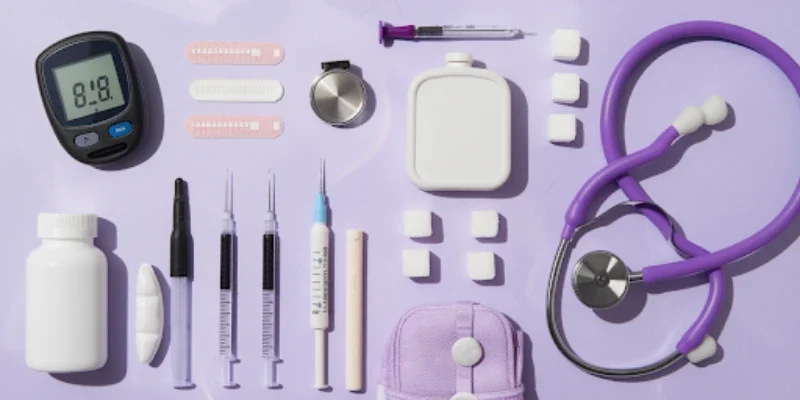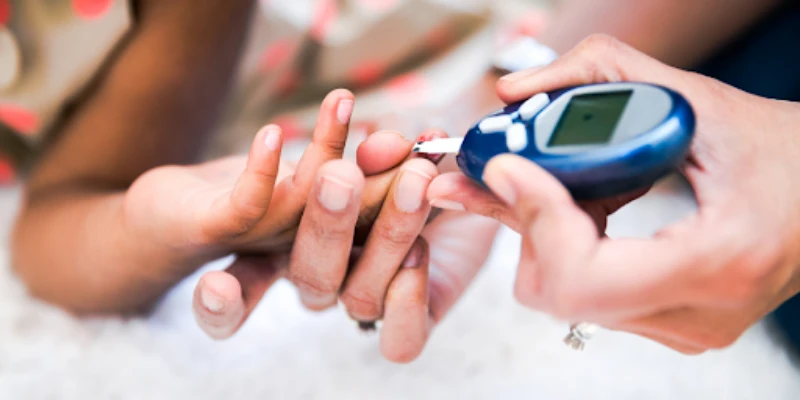Type 2 diabetes impacts millions worldwide, often without obvious warning signs. Recognizing and responding to its symptoms is crucial, as untreated diabetes can lead to serious health complications affecting the heart, kidneys, and nerves. Early detection allows for proactive management and a higher quality of life. Let’s explore key symptoms of Type 2 diabetes, helping you understand what to watch for and how to take action if symptoms arise. By identifying potential warning signs early, you can make informed decisions about your health and reduce the risk of long-term complications.

What is Type 2 Diabetes?
Type 2 diabetes is a progressive metabolic disorder characterized by the body’s inability to produce enough insulin or by the body’s improper use of insulin, known as insulin resistance. Insulin is a vital hormone that helps control blood sugar (glucose) levels by facilitating the movement of glucose from the bloodstream into the cells, where it’s used for energy. When this process is disrupted, glucose accumulates in the blood, leading to elevated blood sugar levels and, eventually, Type 2 diabetes.
According to the Research on; “Type 2 diabetes mellitus in Canada First Nations”
“The epidemic of Type 2 diabetes among Canada’s First Nations is intensifying, with higher prevalence and earlier onset than seen previously. This rise in cases, attributed to complex genetic and environmental factors, underscores the need for culturally relevant prevention and intervention strategies within Indigenous communities.”
These figures underscore the significance of understanding the symptoms, risk factors, and preventive measures. Left unmanaged, Type 2 diabetes can damage various organs and systems in the body, including the heart, kidneys, nerves, and eyes. Yet, it’s a manageable condition; with lifestyle changes, monitoring, and medical support, people with Type 2 diabetes can live full and healthy lives.
Unlike Type 1 diabetes, Type 2 is usually not diagnosed in childhood but often appears in adults over 45, especially those with a family history or other risk factors. However, recent years have seen an alarming increase in Type 2 diabetes among younger populations, including children and teenagers, likely due to lifestyle factors, such as poor diet and inactivity. The body’s progressive loss of insulin sensitivity makes early detection crucial, as many of the initial symptoms are subtle, and the long-term effects can be serious.
Type 2 diabetes is preventable for many individuals, especially those with a family history or certain lifestyle risks. Regular exercise, balanced nutrition, and routine health screenings are valuable tools in reducing the likelihood of developing Type 2 diabetes. For those already diagnosed, managing blood glucose levels and avoiding complications is key to a healthy life. Understanding the symptoms and seeking medical advice promptly can mean the difference between early management and the development of severe complications down the line.
If you’re experiencing symptoms or belong to a high-risk group, taking proactive steps to understand and manage potential signs of diabetes can be life-saving. Tools like the CANRISK test can offer insights into your diabetes risk and help you make informed health decisions. Early diagnosis and intervention are crucial in preventing the onset of severe complications associated with unmanaged diabetes. Take charge of your health by becoming familiar with these critical aspects of Type 2 diabetes, and, when in doubt, consult a medical professional.
Recognizing the Symptoms of Type 2 Diabetes

Type 2 diabetes often develops slowly, and symptoms can range from mild to severe. Some people may have no symptoms, while others may experience distinct warning signs. Recognizing these symptoms is essential, as early detection and management can prevent long-term damage to various body systems.
Here’s a table summarizing the most common signs:
Symptom | Description |
Unusual Thirst | Persistent thirst despite regular hydration. |
Frequent Urination | Increased urination frequency, especially at night, as the body tries to eliminate excess sugar. |
Weight Change | Unexpected weight gain or loss without changes in diet or physical activity. |
Extreme Fatigue | Persistent tiredness or lack of energy, making daily activities difficult. |
Blurred Vision | Fluctuating vision due to high blood sugar levels, which can affect the shape of the eye lens. |
Recurring Infections | Frequent infections, especially in the gums, skin, and urinary tract, as elevated sugar levels impair immune function. |
Slow-Healing Cuts and Bruises | Wounds and bruises that take longer to heal, increasing the risk of infection. |
Tingling or Numbness | Numbness or tingling in the hands and feet, indicating nerve damage from prolonged high sugar levels. |
Erectile Dysfunction | Men may experience difficulties in maintaining an erection due to complications affecting blood flow and nerve health. |
Diabetic Ketoacidosis (DKA) | Although rare in Type 2 diabetes, untreated DKA can lead to nausea, abdominal pain, and rapid breathing and requires immediate medical attention. |
Increased Hunger
This occurs when cells don’t get the energy they need from glucose due to insulin resistance, prompting the body to feel hungry more frequently. This cycle can contribute to weight gain, which further exacerbates blood sugar issues.
Dry Mouth and Itchy Skin
High blood sugar can cause dehydration, leading to dry skin and mouth. Persistent dry skin can become itchy and uncomfortable, potentially causing secondary infections if scratched.
Changes in Sleep Patterns
Disruptions in blood sugar levels can impact sleep, causing individuals to wake up frequently during the night, especially if they need to urinate often. Poor sleep can, in turn, exacerbate fatigue and blood sugar instability.
Mood Swings and Irritability
Blood sugar fluctuations impact brain function, often leading to mood swings or feelings of irritability. Managing blood sugar levels can help stabilize mood and improve mental well-being.
Difficulty in Concentrating
High blood glucose levels can make it hard to focus or feel alert, as glucose is the brain’s primary energy source. When cells can’t access glucose efficiently, brain function can become compromised, leading to mental fatigue.
Frequent Yeast Infections
Both men and women with diabetes are more prone to yeast infections, as high blood sugar creates an environment conducive to fungal growth. This includes infections in warm, moist areas of the skin and recurrent vaginal or oral infections.
Foot Pain or Heaviness
Aside from tingling or numbness, people with diabetes often experience pain or a feeling of heaviness in their legs and feet. Poor circulation due to high blood sugar can contribute to this sensation and may lead to serious complications if left unchecked.
Digestive Issues
High blood sugar can affect the digestive tract, leading to slow digestion (gastroparesis). Symptoms can include stomach pain, bloating, nausea, and occasional vomiting, especially after eating.
Skin Darkening in Certain Areas
A condition known as acanthosis nigricans causes patches of dark, velvety skin, often in skin folds such as the neck, armpits, or groin. This can be an early indicator of insulin resistance, a precursor to Type 2 diabetes.
Impaired Healing from Minor Injuries
Minor cuts, scrapes, or bruises take longer to heal in individuals with Type 2 diabetes due to reduced blood flow and compromised immune function. This delayed healing can increase the risk of infections and long-term skin damage.
Understanding these symptoms and seeking medical advice early can significantly alter the course of diabetes management. Early diagnosis can lead to proactive changes in diet, exercise, and treatment, reducing the likelihood of complications like cardiovascular disease, nerve damage, and kidney disease. Regular check-ups, especially for those with risk factors like family history or obesity, can help catch the onset of Type 2 diabetes before symptoms become severe.
Why Some People Have No Symptoms?
For many, Type 2 diabetes is diagnosed during routine check-ups. High blood sugar can develop gradually, and the body may initially adjust to elevated levels without clear symptoms. However, lack of symptoms doesn’t mean the disease is harmless—Type 2 diabetes can still cause unseen damage to blood vessels, nerves, and organs.
How is Type 2 Diabetes Diagnosed?
Understanding the testing methods for Type 2 diabetes is crucial. In Canada, blood glucose is measured in mmol/L, and testing typically involves the following methods:
- Fasting Blood Glucose Test
- Procedure: No food or drink (other than water) for 8 hours.
- Diagnosis: Levels of 7.0 mmol/L or higher indicate diabetes.
- Random Blood Glucose Test
- Procedure: Test done at any time, regardless of the last meal.
- Diagnosis: Levels of 11.1 mmol/L or higher, along with symptoms, indicate diabetes.
- A1C Test
- Procedure: Measures average blood sugar over the past 2-3 months.
- Diagnosis: Levels of 6.5% or higher confirm diabetes.
- Oral Glucose Tolerance Test (OGTT)
- Procedure: Test after consuming a sweetened drink.
- Diagnosis: Levels of 11.1 mmol/L or higher after 2 hours indicate diabetes.
Note: A second test is often required to confirm diagnosis, except when symptoms are acute.
If you or a loved one exhibits these symptoms or has a family history of diabetes, consider taking a CANRISK test. This short risk assessment can be completed in under two minutes and offers valuable insight into your diabetes risk.
The Importance of Early Detection

Early detection and intervention can make a significant difference in managing Type 2 diabetes. Without treatment, prolonged high blood sugar can lead to serious complications:
- Cardiovascular Disease
- High blood sugar levels increase the risk of heart attacks and strokes by damaging blood vessels over time.
- Kidney Damage
- Diabetes can damage the kidneys, leading to kidney disease or even failure if untreated.
- Eye Conditions
- Conditions like diabetic retinopathy can cause vision impairment and even blindness.
- Nerve Damage
- Long-term high sugar levels damage nerves, often causing pain, numbness, or tingling, especially in the feet and hands.
- Foot Damage
- Nerve damage and poor blood flow can lead to severe foot infections, sometimes resulting in amputation.
Managing Type 2 Diabetes Through Lifestyle Changes
Proper management of Type 2 diabetes can prevent complications and improve quality of life. According to Thibault et al. (2016), the rising prevalence of Type 2 diabetes in Canada is influenced not only by lifestyle factors like obesity and diet but also by broader factors, such as increased screening and urbanization. These findings highlight the need for both individual lifestyle changes and systemic approaches to manage and reduce diabetes rates. Here’s a guide to essential lifestyle practices:
1. Healthy Eating
Focus on balanced meals that regulate blood sugar. Consider a diet with whole grains, lean proteins, and low-fat dairy. Avoid refined sugars and limit carbohydrate-heavy foods, as these can spike blood sugar levels.
Tip: A diabetes-friendly plate consists of half non-starchy vegetables, one-quarter lean protein, and one-quarter whole grains or starchy vegetables.
2. Regular Physical Activity
Exercise enhances insulin sensitivity, helping to control blood sugar. Aim for at least 150 minutes of moderate activity, like brisk walking or cycling, per week. Even simple daily activities, like walking and light stretching, can benefit blood sugar levels.
Diabetes-Friendly Nutrition Guide:
Nutrient | Recommended Choices | Reason |
Carbohydrates | Whole grains, legumes, vegetables | Slow-release carbs prevent sugar spikes |
Protein | Lean meats, fish, eggs, tofu | Helps stabilize blood sugar |
Fats | Avocado, nuts, olive oil | Healthy fats support heart health |
Fiber | Leafy greens, whole fruits, oats | Improves digestion and slows glucose release |
Hydration | Water, herbal teas, low-calorie drinks | Prevents dehydration, supports kidney health |
Preventing Type 2 Diabetes Complications

Preventive steps can significantly reduce the risk of complications:
1 . Monitor Blood Sugar Regularly
- Regularly test blood sugar to stay within target ranges and avoid sudden spikes or drops.
2 . Attend Diabetes Education Programs
- Diabetes education helps people with Type 2 diabetes understand the condition, set achievable goals, and manage their health independently.
3 . Regular Health Check-Ups
- Regular appointments allow healthcare providers to catch early signs of complications, such as kidney issues or nerve damage.
Dispelling Common Myths About Type 2 Diabetes
Many misconceptions surround Type 2 diabetes, leading to confusion and potential harm. Here’s a look at some of the most common myths:
- Myth: Only overweight people develop Type 2 diabetes.
- Reality: While weight is a risk factor, genetics, age, and lifestyle also play roles.
- Myth: People with diabetes can’t eat sweets.
- Reality: Moderation and careful planning allow for occasional treats without impacting blood sugar control.
- Myth: Diabetes is reversible with diet and exercise alone.
- Reality: While lifestyle changes are essential, diabetes is a chronic condition that requires ongoing management.
Let Us Take Care Of Your Health And Wellbeing!
Understanding and recognizing the symptoms of Type 2 diabetes is crucial for early diagnosis and effective management. Symptoms can be subtle, but proactive health checks and an awareness of changes in your body can make all the difference. If you or a loved one are at risk for diabetes or showing symptoms, seeking medical advice is the first step. Teleplus Care provides professional Diabetes Care in Alberta, ensuring you have the guidance you need to manage and live a healthy life with diabetes.
Connect with Teleplus Care today for personalized Diabetes Care.






